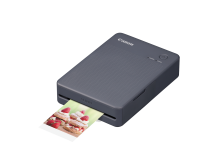Researchers used XRF data to show that lead and chromium were present in some of the Lipscomb books.
If you encounter vividly colored, cloth-bound books from the Victorian period, it’s advisable to handle them with care or possibly avoid them entirely. The appealing colors may be derived from dyes that could present health hazards to readers, collectors, or librarians.
Recent research on these hazardous books employed three methods, including one that has not been previously utilized for books, to evaluate harmful dyes in a university collection. The findings indicate that some volumes may pose a risk when handled.
The researchers present their results at the upcoming fall meeting of the American Chemical Society.
"These vintage books containing toxic dyes could be found in universities, public libraries, and private collections," states Abigail Hoermann, an undergraduate studying chemistry at Lipscomb University. Users may be at risk if pigments from the cloth covers transfer to their hands or become airborne and are inhaled.
"So, we want to find a way to make it easy for everyone to be able to find what their exposure is to these books, and how to safely store them." Hoermann, recent graduate Jafer Aljorani, and undergraduate Leila Ais have been conducting the study with Joseph Weinstein-Webb, an assistant chemistry professor at Lipscomb.
The research commenced when Lipscomb librarians Jan Cohu and Michaela Rutledge reached out to the university's chemistry department to analyze the vividly colored fabric-covered books from the 19th and early 20th centuries housed in the Beaman Library.
Weinstein-Webb was fascinated to learn that the Winterthur Museum, Garden & Library had previously investigated its own 19th-century books for the presence of an arsenic compound called copper acetoarsenite.
This vibrant emerald-green pigment was utilized in Victorian-era wallpaper, clothing, and—as discovered by Winterthur—in fabric book covers. This finding prompted the initiation of the Poison Book Project, a crowdsourced research initiative that employs X-ray fluorescence (XRF), Raman spectroscopy, and other methods to identify toxic pigments in books globally. In 2022, Weinstein-Webb and the Lipscomb students he enlisted began their own investigation.
For the Lipscomb book project, the team used three spectroscopic techniques:
- XRF to qualitatively check whether arsenic or other heavy metals were present in any of the book covers.
- Inductively coupled plasma optical emission spectroscopy (ICP-OES) to determine the concentration of those metals.
- X-ray diffraction (XRD) to identify the pigment molecules that contain those metals.
According to Ais, while XRD has been utilized in the analysis of paintings and wallpaper in the past, this marks the first instance of its application in detecting toxins in books. The XRD testing is being conducted in partnership with Janet Macdonald at Vanderbilt University.
Recently, researchers utilized XRF data to demonstrate the presence of lead and chromium in certain Lipscomb books. To quantify these elements, they carefully cut samples approximately the size of a small paperclip from the cloth covers and subsequently dissolved them in nitric acid.
The analysis conducted using ICP-OES revealed that lead and chromium were present at elevated levels in certain samples. Further XRD testing indicated that, in some cases, these heavy metals existed as lead(II) chromate, a compound that is a key component of the chrome yellow pigment famously used by Vincent van Gogh in his sunflower paintings.
Despite the presence of lead(II) chromate, the analysis revealed a significantly higher concentration of lead compared to chromium in the book covers, which raises questions since lead(II) chromate consists of equal parts of both elements. The researchers hypothesize that the dyes used in the book covers may include other lead-based pigments that do not contain chromium, such as lead(II) oxide or lead(II) sulfide. The team is currently focused on identifying these additional compounds present in the yellow pigments.
Weinstein-Webb and the students aimed to assess whether the levels of heavy metals in the Lipscomb books could pose a risk to librarians who handle them. Their findings indicated that for some of the book covers, the concentrations of metals exceeded the acceptable limits for chronic exposure as established by the Centers for Disease Control and Prevention (CDC). This raises important health considerations for those who may come into contact with these materials regularly.
In the dissolved sample from the most contaminated book cover, the lead concentration was found to be more than twice the limit set by the CDC, while the chromium concentration was nearly six times the acceptable limit. Chronic exposure to inhaled lead or chromium can result in serious health effects, including an increased risk of cancer, lung damage, and potential fertility issues. These findings underscore the importance of addressing the safety of handling these materials, particularly for librarians and others who may come into contact with them regularly.
Weinstein-Webb expressed intrigue at how perceptions of safety have evolved over time, noting, "I find it fascinating to know what previous generations thought was safe, and then we learn, oh, actually, that might not have been a great idea to use these brilliant dyes." In response to the findings, the Lipscomb library has taken precautionary measures by sealing colorful 19th-century books that have not yet been tested in plastic zip-close bags for safe handling and storage. Additionally, books that have been confirmed to contain hazardous dyes have been sealed in bags and removed from public circulation to protect the health of library staff and patrons.
Once the researchers have done some more testing, they plan to contribute their results to the Poison Book Project and to help spread awareness on safe handling, conservation and storage of these books among librarians and collectors.
They also hope others will follow their lead and begin using XRD, because it doesn't require investigators to cut samples from books. "Moving forward," says Hoermann, "we want libraries to be able to test their collections without destroying them."
More information: Multimodal detection of toxic metals in Victorian era book cloths as part of the Beaman library collection, ACS Fall 2024.











